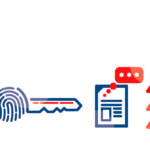Featuring the University of California’s split from Elsevier, opinions on Plan S from the Global South and the academic community and the rise in pharma research published open access
A parting of ways for the University of California and Elsevier via The Chronicle of Higher Education
Last week’s big headline was the University of California’s controversial cancellation of its subscription to high-end publisher Elsevier after months of failed negotiations. The university did not renew its 5-year subscription (costing over $50 million) despite rumours of a counter proposal from Elsevier, which would provide open access options for all researchers. The shock split serves not only as a big win for open access advocates but also as a statement to other libraries and institutions. In the lead up to Plan S, it is unlikely that this will be the last university journal subscription to be terminated. The most obvious result of this separation is the loss of subscription revenue for Elsevier. However, restricted access to Elsevier journals will also pose a problem for the university’s research community, who may now face struggles in accessing subscription-only content.
Plan S from the other slide of the globe via LSE Impact Blog
As the shortlist for the new Plan S coordinator is finalized, the plan’s architect Robert-Jan Smits has shared his hopes, in a recent article in Science Business, that the new coordinator will be European to keep Europe at the forefront of the global open access movement. However, will a plan developed in the Global North be the best strategy for increasing open access in the Global South? Tight deadlines, technical specifications for journal platforms and article processing charges (APCs) are some of the issues commonly associated with Plan S. Although they allow researchers from low-income countries to access research articles, uncapped APCs may now exclude the Global South by preventing those researchers from publishing their research altogether. This has led to many people questioning what the incentive is for low-income countries to sign up to Plan S. In terms of publishing, many of the popular journals in the Global South are government-funded and offer diamond open access (free to both read and publish in). From a reader’s perspective, a better solution for these countries may be to negotiate citizen-wide licensing deals similar to those already in place in Egypt and Uruguay.
Is Plan S really taking their freedom? via Samuel Moore
Many academics have spoken out against Plan S claiming that the plan restricts their academic freedom. These claims are based partly on a statement by the American Association of University Professors from 1940, which states that academics should be entitled to full freedom in the publication of their research findings. Plan S will require academics to publish in specific open access journals. Although Plan S restricts publishing freedom, researchers already face limitations on where they can publish their research in the form of peer review. Another point raised in this article is how these complaints, often from academics in Europe and North America, have trivialized the real restrictions and persecution that academics from some countries face (collated in the Academic Freedom Monitoring Project). The article calls for responsible decision-making from academics and suggests that that the research community is objecting not to Plan S itself but to a mandate coming from outside academia.
Pharma takes the lead in open access publishing via Nature
Pharma experienced some positive media exposure this week as it overtook academia in terms of the number of papers published open access. A study published in February 2019 looked at the proportion of papers published open access by 23 leading pharmaceutical companies versus open access medical publications in general. Over the 7 years included in the study, the number of open access pharma publications more than doubled, from 20% in 2009 to over 40% in 2016, overtaking the baseline for medical publications in general. Pharma has also begun to reference more open access papers, with a 12% increase in open access citations over the duration of the study. However, much of this progress has involved publishing in green open access journals and will not comply with Plan S guidelines. In terms of gold open access publications, pharma is still lagging behind academia.
Image courtesy of Jukka Zitting






